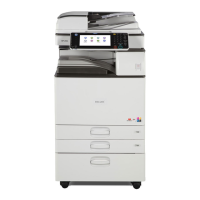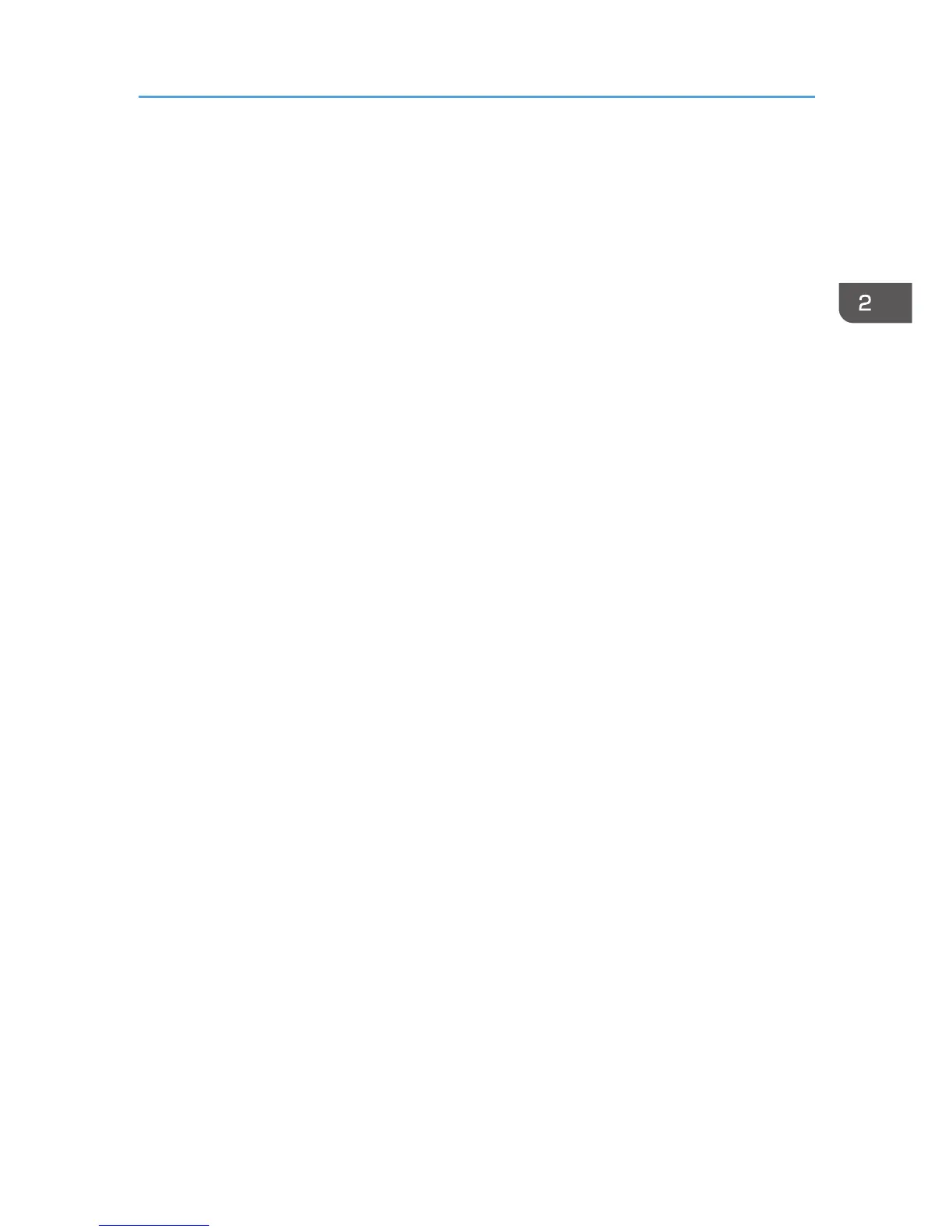3. Connect the machine and computer using a USB cable.
Connect the USB cable firmly.
4. Turn on the power of the machine.
Found New Hardware Wizard starts, and USB Printing Support is installed automatically.
5. Click [Devices and Printers] from the [Start] menu.
If you are using a computer that is running Windows 8 or Windows Server 2012, click [Search] on
the Charm Bar, and then click [Control Panel]. When the [Control Panel] window appears, click
[View devices and printers].
6. Double-Click the icon of machine you want to use in the [Unspecified] category.
7. Click the [Hardware] tab.
8. Click [Properties].
9. Click the [General] tab.
10. Click [Change settings].
11. Click [Driver] tab.
12. Click [Update Driver...].
13. Click [Browse my computer for driver software].
14. Insert the provided CD-ROM into the computer's CD-ROM drive.
If the [AutoPlay] dialog box appears, click [Close].
15. Click [Browse], and then select the printer driver location.
If the CD-ROM drive is D, the source files of the printer driver are stored in the following locations:
•
PCL 5e
32-bit driver D:\X86\DRIVERS\PCL5E\XP_VISTA\(Language)\DISK1
64-bit driver D:\X64\DRIVERS\PCL5E\X64\(Language)\DISK1
• PCL 6
32-bit driver D:\X86\DRIVERS\PCL6\XP_VISTA\MUI\DISK1
64-bit driver D:\X64\DRIVERS\PCL6\X64\MUI\DISK1
• PostScript 3
32-bit driver D:\X86\DRIVERS\PS\XP_VISTA\MUI\DISK1
64-bit driver D:\X64\DRIVERS\PS\X64\MUI\DISK1
For details about the languages supported in the printer drivers, see page 6 "Supported
languages".
16. Click [Next].
The installation starts.
Installing the Printer Driver for a Local Connection
33

